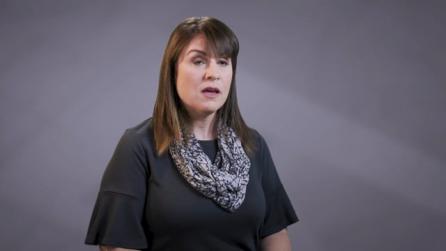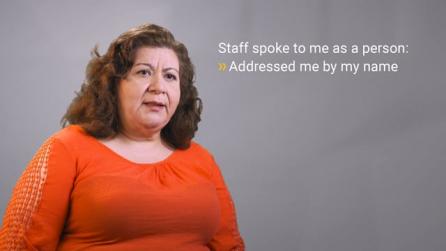Lived Experience
What do we mean by Lived Experience?
There are many ways we talk about lived experience in suicide prevention and the Zero Suicide Toolkit. A few you'll see in the Zero Suicide Toolkit include1 :
- Lived experience: A broad term encompassing a range of experiences with suicidal intensity. This range includes direct and personal experience of suicide as well as experience of the personal impact or trauma related to a suicidal crisis within one's social circle.
- Personal lived experience of suicide: Firsthand experience with suicidal thoughts, feelings, and/or intensity. This category includes surviving a suicide attempt as well as ongoing or intermittent suicidal experiences.
- Relational lived experience of suicide: Experience from being close to someone who went through (or is going through) suicidal intensity. This category includes bereavement from suicide death as well as experience as a close friend or family member of someone with personal lived experience of suicide.
- Lived expertise: The combination of role-relevant skills and knowledge based in lived experience that is used to advance suicide prevention structurally, through introduction of lived experience learnings in program design or implementation, policy or organizational practices, research design and application.
- Peer support: Any support provided by one person to another that relies on shared experience, especially the shared experience of adversity. Peer support may be informal, mutual, or highly structured in the form of a professional service (e.g., peer support services).
- Peer specialist: Someone employed to provide professional peer support services, most often in the domain of behavioral health and recovery. Peer specialists normally have substantial training prior to employment although these trainings vary. In most U.S. states, peer specialists are required to obtain certification in order to provide services.
Involving People with Lived Experience
For an organization implementing Zero Suicide, one of the first actions should be to partner with people with lived experience in developing, implementing, and evaluating efforts. For example, your Zero Suicide implementation team should include at least one person with lived experience. Including those with lived experience provides many valuable and impactful benefits that support your organization’s success with Zero Suicide implementation: most importantly, providing high-quality, compassionate, and collaborative care to those individuals at risk of suicide.
Amplifying the voices of those with lived experience can allow your organization to better understand the impact of your services and create a system of care in which individuals feel respected, heard, and safe. Additionally, by consulting with those with lived experience as a loved one of an individual with suicide risk, as well as those who have experienced suicide loss, your organization can build a system of care that takes into account the vitality of support networks while also respecting the privacy of those in care.
Similarly, by creating an opportunity for those who are in care, or those who have previously been in care, to share their feedback, your organization makes clear that they are committed to patient-centered care and are eager to learn how they can provide better support to individuals at risk of suicide. You may not have to look outside your organization for lived experience. Many organizations find that they have staff with lived experience. Clinical practice often discourages self-disclosure to avoid harm to patients and therapeutic relationships. Including individuals with lived experience as part of your implementation team is something different and of significant importance.
Suggestions for Involvement
Engaging People with Lived Experience: A Toolkit for Organization offers guidance on recruiting and engaging individuals with lived experience inside and outside your organization. Other key areas outlined in the toolkit for organizations are how to ensure that involvement is beneficial to them and the organization as well as what meaningful levels of engagement are based on your organization's needs and the desire of the individual with lived experience.
The Suicide Attempt Survivors Task Force of the National Action Alliance for Suicide Prevention issued a report - The Way Forward: Pathways to Hope, Recovery, and Wellness with Insights from Lived Experience - that offers a set of core values to inform suicide prevention and care as well as specific recommendations for health and behavioral healthcare organizations and program developers.
The Way Forward suggests several ways in which people with lived experience can be involved in improving suicide care:
- Suicide prevention and behavioral health care organizations can engage, hire, and/or collaborate with peer support professionals. They should also include attempt survivors as key partners in suicide prevention and safer suicide care efforts.
- Providers of crisis or emergency services can develop formal partnerships with organizations that offer peer support services and especially organizations that are operated or driven by people with lived experience.
- Suicide prevention and behavioral health groups can engage attempt survivors as partners in developing, implementing, and evaluating efforts.
- All types of providers can use a certified peer specialist on care coordination teams. This involvement can have direct benefits for a person receiving care, including role modeling and improved problem-solving.2
Recommended Resources
- 1We'd like to thank DeQuincy Levine, Ph.D., for sharing these definitions.
- 2National Action Alliance for Suicide Prevention, Suicide Attempt Survivors Task Force. (2014). The way forward: Pathways to hope, recovery, and wellness with insights from lived experience. Washington, DC: Author. Retrieved from https://theactionalliance.org/resource/way-forward-pathways-hope-recove…


